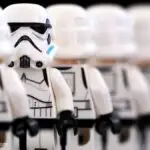How do actors cry? And why it is an essential acting skill?
Have you ever wondered how actors are able to cry on command? Whether it’s a heartbreaking scene in a movie or a dramatic moment on stage, tears are an essential part of the performance.
But how do they make it look so real? There are actually many ways actors make themselves cry on demand.
Let’s dive deeper into the techniques actors use to turn on the waterworks and bring authentic emotion to their performances.
Why is crying in acting useful?
Crying is an essential aspect of acting that helps actors connect with their characters and bring out the desired emotions in a scene. It is a powerful tool that enables actors to capture the depth and vulnerability of their characters and convey that to the audience.
Learning how to cry on command is a valuable skill that every actor should possess to deliver compelling performances.
With the help of physical tricks, accessing emotional memories, and fully immersing themselves in the character, actors can bring authenticity to their tears and elevate their acting to the next level.
Importance of hydration
When it comes to crying in acting, hydration is key. It may seem like a small detail, but being properly hydrated can make a big difference in your ability to produce tears.
Dehydration can prevent tear ducts from activating, leading to difficulty in crying on cue.
So, make sure to drink plenty of water in the hours leading up to your crying scene.
Think of it as a simple but important step in your preparation for a great performance.
How to Cry on Cue as an Actor
1. Mimic crying
One of the key tricks to crying on command is to mimic the mechanical responses of a real cry.
This includes tense facial muscles and heavy, uneven breathing.
It’s important to recreate all the bodily responses of crying, even if it means making whimpering noises or altering your breathing pattern.
These physical tricks can be helpful for actors who struggle to access real emotions on cue.
2. Heavy breathing
One physical trick to help actors cry on cue is to exercise for heavy breathing.
By practicing exercises that focus on deep breathing, actors can improve their ability to mimic the uneven and heavy breathing of someone who is crying.
This can help to recreate a more authentic crying facial expression and add whimpering noises, enhancing the overall effect.
While it may not be the only technique needed to create tears, exercising for heavy breathing can certainly be a useful tool for actors to master the art of crying on command.
3. No blinking technique
The No Blinking Technique is a commonly used acting hack to produce tears on cue.
By focusing on a single point and resisting the urge to blink, actors can naturally generate tears after about 30 seconds.
This technique can come in handy when emotion just isn’t cutting it and a crying scene is required.
While it can be tricky to resist blinking, with practice, actors may find themselves able to generate tears consistently using this technique.
So, next time you need to cry on command, give the No Blinking Technique a try.
4. Laughing technique
Another technique actors use to cry on cue is the laughing technique.
This might surprise some people but it actually makes sense – when we’re laughing really hard, our bodies may start to produce tears.
So actors can try to think of something really funny or find someone on set to make them laugh just before they need to cry on camera.
It’s all about accessing those tear ducts and bringing out natural emotion.
5. Yawning technique
One of the surprising ways to make yourself cry on cue is through yawning.
By attempting to swallow your sadness and focusing the yawn in the back of your throat, you can create a doleful appearance for your eyes and face.
This technique may not work for everyone, but it’s worth a try if you’re looking for a natural way to trigger tears. Remember, the key is to fully immerse yourself in the character and let go of the pressure to force a fake cry.
6. Menthol tear sticks and sprays
One of the common techniques that actors use to produce tears on camera is with the help of menthol tear sticks and sprays.
These products are designed specifically to generate tears by releasing menthol vapours into the eyes.
They are easy to use and come in compact, lipstick-like containers, making them portable and convenient for actors to carry around.
Despite their effectiveness, it’s important to use these products carefully to avoid any irritation or discomfort.
Narrative Cosmetics Tear Stick Menthol-Infused Wax for Natural Tears on Cue is a popular option used by many actors and performers.
7. Onion technique
One of the most popular ways for actors to cry on cue is the onion technique.
It involves cutting an onion and inhaling the vapors to stimulate tears.
However, it is important to use this technique with caution, as it can affect other actors and crew members nearby.
It is best to use this technique only with other actors in the scene who also need to cry.
Remember to not overuse this technique and try to rely on a combination of techniques to create genuine tears.
8. Letting go of the pressure
One key technique for how actors cry is simply letting go of the pressure to cry on cue.
Focusing too much on the end result can actually hinder an actor’s ability to tap into genuine emotions and bring out real tears.
Instead, it’s important to fully immerse oneself in the character and the emotional truth of the moment.
By relinquishing control and allowing the emotions to flow naturally, actors can often achieve more convincing and impactful performances.
9. Fully immersing yourself in the character
To fully immerse yourself in the character means to connect with their life experiences and empathize with their emotions.
It requires a deep understanding of the character’s backstory and their motivations.
Many of the key acting techniques are built around this philosophy.
This technique is effective in allowing the actor to feel the character’s pain or happiness as their own, resulting in natural and genuine tears.
By connecting the scene to one’s life experiences and memories, the actor can trigger strong emotions, making the performance more impactful.
The key is to allow oneself to fully commit and be in the moment, channeling all emotions and energy towards the scene.
10. Using old memories
One technique for actors to cry on command is to use old memories of loss or heartbreak.
By meditating on specific moments in their lives that evoke strong emotions, actors can access those emotions and tap into the tears needed for the scene.
However, it’s important for actors to be aware of the potential side effects of constantly bringing up traumatic memories and to also fully immerse themselves in the character and the emotional truth of the moment.
11. Connection to the character
Connecting to the character is crucial in driving genuine emotions and tears.
As an actor, immersing yourself in the role and understanding the character’s pain or struggle can trigger authentic tearful reactions.
It’s important to find a way to relate to the character, perhaps by drawing from personal experiences or by using empathy to imagine their situation.
By fully embodying the character and internalizing their emotions, actors can produce tears that come from an honest and real place, making their performances more powerful and impactful.
Combination of techniques
When it comes to crying on cue, actors have an array of physical tricks and emotional techniques they can utilize.
Some actors swear by the no blinking technique, while others use menthol tear sticks or sprays. Laughing or yawning can even help stimulate tears.
But the most effective way to produce genuine tears on command is to fully immerse oneself in the character and connect with the emotions of the scene.
By doing so, actors can tap into their own personal memories and experiences to elicit tearful performances.
Combining multiple techniques is a great way to achieve the desired result in a more efficient manner.
Many actors use a combination of physical tricks and emotional preparation to trigger genuine tears on demand.
For example, an actor may exercise to get their breathing heavy and uneven before a scene and then use memories of a personal loss to tap into the necessary emotions.
By experimenting with different techniques and finding what works best for them, actors can enhance their performances and create memorable, emotional scenes.
More about Actors
- Casting Agents UK: What You Need To Know
- What Makes a Good Actor?
- How to Act Drunk for Actors on Stage and Screen
- Brechtian Acting Techniques & Exercises
- Film Set Etiquette: Professional Behaviour on Set
- What Do Actors Do If They Don’t Make It?
- Acting Terminology
- Self Tape Audition Mistakes to Avoid
- Meisner Acting Technique
- Can You be an Actor and a Filmmaker?
- How Do Actors Cry?
- How Do Actors Remember Their Lines?
- Can Actors Drink Alcohol on TV?
- Allen & Abel Acting Agency
- Do actors have personalities?
- Will Actors be Replaced by Robots, CGI or AI?
- Are Actors Smart?
- How Does An Actor Get A Role?
- Can Actors Have Tattoos?
- Casting Type: What Actor Type Are You?






















